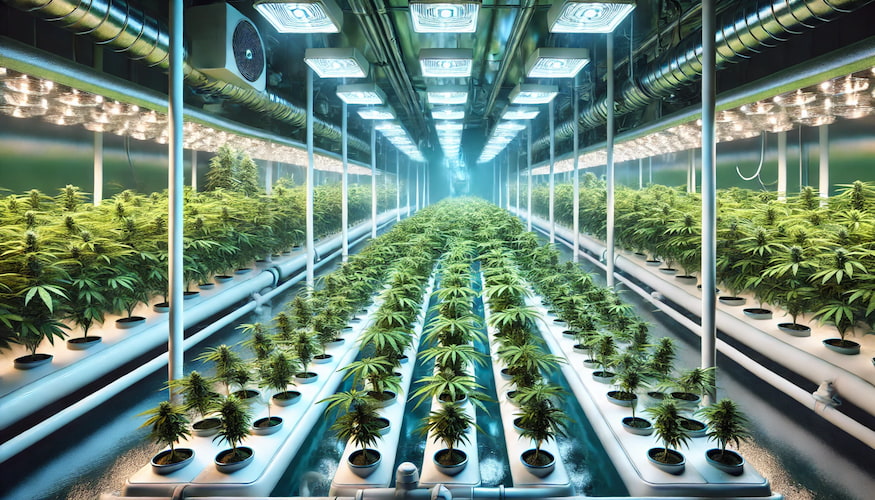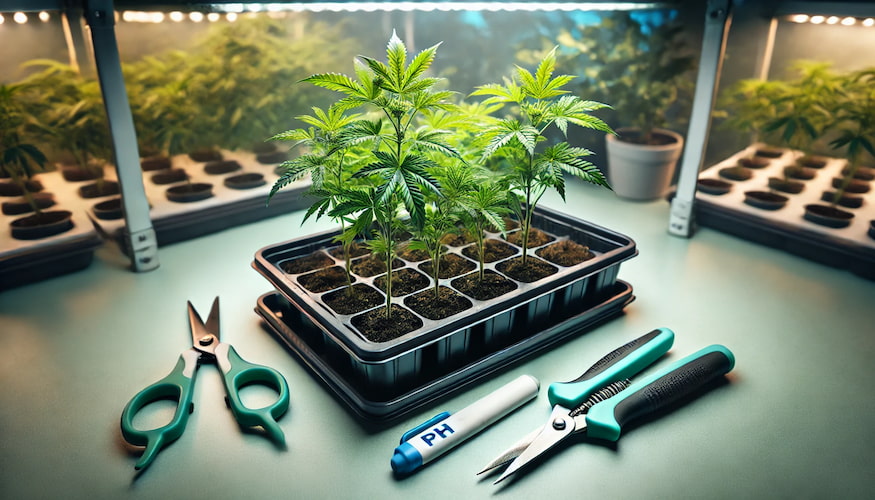Introduction: The Future of Cannabis Cloning
Hey there, hydro heroes! James Bean from IWantClones.com here. Hydroponic cloning is revolutionizing the way we propagate cannabis. It’s faster, cleaner, and can lead to explosive growth rates. In this guide, we’ll dive deep into the world of water-based cloning and how you can harness its power for your grows.
Why Choose Hydroponic Cloning?
- Faster rooting times
- Higher success rates
- Cleaner, more controlled environment
- Easier to monitor root development
- Seamless transition to hydroponic growing systems
Key Components of Hydroponic Cloning
Success in hydroponic cloning hinges on three main factors:
- Hydroponic Systems: Choosing the right setup for your needs
- Nutrient Solutions: Providing the perfect balance for root development
- pH Management: Maintaining the ideal environment for nutrient uptake
We’ll explore each of these in detail in our sub-guides:
Types of Hydroponic Cloning Systems
- Aeroponic Cloners:
- Uses misted nutrient solution
- Fast rooting, high success rates
- Bubble Cloners:
- Simple DIY option
- Uses air stones to oxygenate water
- Ebb and Flow Systems:
- Periodic flooding with nutrient solution
- Good for larger-scale operations
- Deep Water Culture (DWC):
- Cuttings suspended in oxygenated nutrient solution
- Great for beginners
Step-by-Step Hydroponic Cloning Process
- Prepare Your System:
- Clean and sanitize all components
- Fill with pH-balanced water or nutrient solution
- Take Your Cuttings:
- Choose healthy mother plants
- Make clean 45-degree angle cuts
- Prepare Cuttings:
- Remove lower leaves
- Apply rooting hormone (optional in some systems)
- Insert Cuttings:
- Place in net pots or neoprene collars
- Ensure stem end is submerged or in mist zone
- Maintain Environment:
- Keep temperature around 72-78°F
- Maintain high humidity (70-80%)
- Provide gentle light (CFL or low-intensity LED)
- Monitor and Adjust:
- Check pH and EC daily
- Watch for signs of rooting (usually 7-14 days)

Nutrient Management for Hydroponic Clones
- Start with a mild nutrient solution (1/4 to 1/2 strength)
- Use a cloning-specific nutrient or mild vegetative formula
- Maintain EC between 0.5-0.8 mS/cm for most strains
pH: The Key To Nutrient Uptake
- Maintain pH between 5.5-6.2 for optimal nutrient absorption
- Use pH Up/Down solutions to make adjustments
- Invest in a quality pH meter for accuracy
Common Challenges in Hydroponic Cloning
- Algae Growth:
- Solution: Use light-proof containers, add hydrogen peroxide
- Slow Rooting:
- Solution: Check temperature, oxygenation, and nutrient levels
- Wilting:
- Solution: Ensure high humidity, check for stem rot
- Nutrient Burn:
- Solution: Reduce nutrient strength, flush with clean water
Advanced Techniques for Hydroponic Cloning
- Temperature Control:
- Use water chillers for precise temp management
- Beneficial Bacteria:
- Add root-promoting microbes to your solution
- Foliar Feeding:
- Mist cuttings with mild nutrient solution
Transitioning Clones To Growing Systems
Once rooted:
- Gradually increase nutrient strength
- Slowly lower humidity
- Increase light intensity
- Transplant to your main hydroponic system or growing medium
Conclusion: Diving into Hydroponic Success
Hydroponic cloning offers a world of benefits for cannabis propagation. With the right setup, knowledge, and a bit of practice, you’ll be producing healthy, fast-rooting clones in no time.
At IWantClones.com, we’re passionate about all forms of cannabis cultivation. While we offer premium, ready-to-grow clones, we also support DIY cloners with expert advice for hydroponic setups.
Ready to dive into hydroponic cloning? Check out our premium cannabis clones and take your propagation game to the next level.
Happy cloning, and may your roots always be abundant and healthy!














